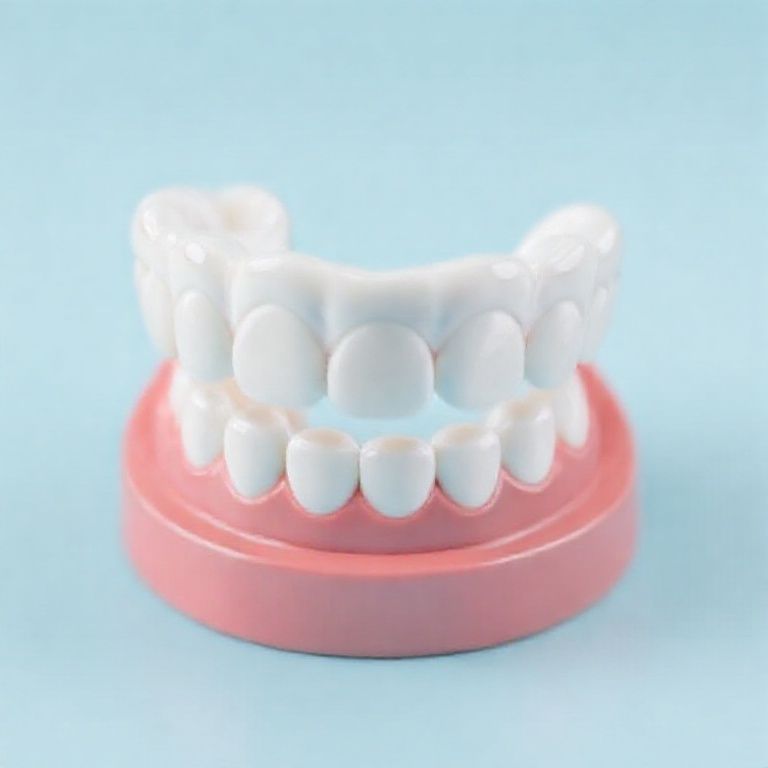Understanding the dental bridge cost in australia: A Comprehensive Guide
A dazzling smile is often considered a gateway to confidence and well-being. Missing teeth can significantly impact not only your aesthetics but also your speech, ability to chew effectively, and overall oral health. Dental bridges offer a reliable solution to replace missing teeth and restore a complete and functional smile. However, navigating the cost of dental bridges in Australia can be confusing. This comprehensive guide delves into everything you need to know about dental bridge cost in australia, empowering you to make informed decisions about your oral health investment.

The Enticing Allure of Dental Bridges
Dental bridges are fixed dental restorations that literally bridge the gap created by missing teeth. They consist of artificial teeth (pontics) anchored to healthy teeth on either side of the missing tooth/teeth. Crowns are placed on the healthy teeth to provide a secure foundation for the bridge. Bridges are typically made from porcelain fused to metal (PFM), zirconia, or full cast gold. Each material offers unique advantages and disadvantages, which we’ll explore later.
Dental bridges offer a multitude of benefits, including:
- Improved Aesthetics: Bridges restore a natural-looking smile, boosting confidence and self-esteem.
- Enhanced Speech: Missing teeth can impact speech clarity. Bridges improve speech by providing proper support for the tongue and lips.
- Better Chewing Ability: Bridges restore proper chewing function, allowing you to enjoy a wider variety of foods comfortably.
- Prevents Shifting Teeth: Missing teeth can cause surrounding teeth to shift out of position. Bridges prevent this, maintaining proper dental alignment.
- Supports Facial Structure: Bridges help maintain facial structure by preventing sagging caused by missing teeth.
Factors Influencing Dental Bridge Costs in Australia
The cost of a dental bridge in Australia is not a one-size-fits-all proposition. Several factors significantly influence the final price tag. Here’s a breakdown of the key cost determinants:
- Number of Missing Teeth: The number of teeth being replaced directly affects the cost. A bridge replacing a single tooth will naturally be cheaper than a bridge spanning multiple teeth.
- Material Selection: The material used for the bridge frame and pontic significantly impacts the cost. PFM bridges are generally the most affordable option, while zirconia and full cast gold bridges are more expensive due to their superior aesthetics and durability.
- Complexity of the Procedure: The complexity of the case can influence the cost. For instance, bridges requiring additional procedures like tooth extraction or bone grafting will be more expensive.
- Location and Experience of the Dentist: The geographical location and experience level of the dentist can influence the cost. Dentists in metropolitan areas may charge more compared to those in regional locations. Similarly, highly experienced dentists may command a premium.
- Dental Health Insurance: Dental health insurance can significantly reduce the out-of-pocket cost of dental bridges. Depending on your policy, a portion of the bridge cost may be covered.
Understanding Dental Bridge Cost Variations
To provide a clearer picture, here’s a table outlining the estimated cost range for different bridge configurations in Australia:
| Number of Missing Teeth | Material | Estimated Cost Range |
|---|---|---|
| Single Tooth | PFM | $2,500 – $4,000 |
| Single Tooth | Zirconia | $3,000 – $5,000 |
| Two Teeth | PFM | $4,000 – $6,000 |
| Two Teeth | Zirconia | $5,000 – $7,000 |
| Three Teeth | PFM | $5,000 – $8,000 |
| Three Teeth | Zirconia | $6,000 – $9,000 |
It’s important to remember that these are just estimates. The actual cost for your specific case may vary depending on the factors mentioned earlier.
Beyond the Bridge: Additional Considerations
The cost of your dental bridge treatment may extend beyond the bridge itself. Here are some additional expenses to factor in:
- Consultation Fees: There may be a consultation fee associated with discussing your treatment plan with the dentist.
- Preliminary Examinations: X-rays and other diagnostic examinations may be required to assess your oral health and determine the suitability of bridgework.
- Anesthesia: Depending on your anxiety level and the complexity of the procedure, local anesthesia or sedation may be needed, adding to the cost.
- Temporary Bridge: In some cases, a temporary bridge may be placed while the permanent bridge is being fabricated.
Financing Your Dental Bridge Treatment
The cost of dental bridges can be a significant investment. Fortunately, several options can help manage the financial burden:
- Dental Health Insurance: As mentioned earlier, dental health insurance can significantly reduce the out-of-pocket cost.
Unveiling the Materials: A Deep Dive into Bridge Options
The material chosen for your dental bridge significantly impacts its aesthetics, durability, and cost. Let’s delve deeper into the three most common bridge materials and their unique characteristics:
1. Porcelain Fused to Metal (PFM):
- Material Composition: PFM bridges consist of a metal framework (usually cobalt-chromium) for strength and support, bonded to a layer of porcelain that replicates the natural appearance of teeth.
- Advantages: PFM bridges are the most affordable option among the three. They offer a good balance of aesthetics and strength.
- Disadvantages: The metal base of PFM bridges can sometimes show through the porcelain, particularly at the gumline, resulting in a less natural appearance compared to other materials. Additionally, porcelain can chip or fracture over time.
2. Zirconia:
- Material Composition: Zirconia bridges are crafted from a biocompatible ceramic material known for its exceptional strength and durability. Zirconia is naturally white, eliminating the risk of a metal base showing through the gumline.
- Advantages: Zirconia bridges offer superior aesthetics compared to PFM due to their natural-looking translucency. They are also highly resistant to chipping and fracturing, making them a good long-term investment.
- Disadvantages: Zirconia bridges are generally more expensive than PFM options. While highly durable, they may not be suitable for all cases, especially those requiring significant bite force.
3. Full Cast Gold:
- Material Composition: As the name suggests, full cast gold bridges are constructed entirely from gold alloy.
- Advantages: Gold bridges are renowned for their exceptional strength, biocompatibility, and resistance to wear and tear. They are a good choice for patients requiring a durable bridge in areas of the mouth subjected to high bite force.
- Disadvantages: Full cast gold bridges are the most expensive option due to the high cost of gold. Additionally, the gold color may not be aesthetically pleasing for everyone.
Choosing the Right Material: A Collaborative Effort
The ideal material for your dental bridge depends on several factors, including:
- Your Budget: PFM bridges offer the most cost-effective option, while zirconia and gold bridges come at a premium.
- Desired Aesthetics: If achieving a natural, tooth-like appearance is a priority, zirconia is an excellent choice. Gold bridges may not be the most aesthetically pleasing option for everyone.
- Location of the Bridge: For bridges placed in areas subjected to high bite force (e.g., back molars), gold or zirconia bridges may be recommended due to their superior strength.
- Your Dentist’s Expertise: Different dentists may have varying experience and preferences regarding bridge materials. Discuss your options with your dentist to determine the best material for your specific needs.
Beyond Materials: Exploring Bridge Types
There are different types of dental bridges to consider, each with its own advantages and limitations. Here’s a brief overview of the two most common types:
- Traditional Fixed Bridges: These are the most common type of bridge, as discussed throughout this guide. They are permanently anchored to the surrounding teeth and cannot be removed by the patient.
- Cantilever Bridges: Cantilever bridges are anchored to only one healthy tooth on one side of the gap. They are generally less stable than traditional fixed bridges and may not be suitable for all situations.
The Importance of Consulting Your Dentist
Choosing the right dental bridge material and type requires a thorough consultation with your dentist. They will assess your oral health, the location and number of missing teeth, your bite force, and your aesthetic preferences. Based on this comprehensive evaluation, your dentist will recommend the most suitable and cost-effective bridge solution for your unique needs.
Next Steps: Getting Started on Your Bridgework Journey
Understanding the factors influencing dental bridge costs empowers you to make informed decisions about your oral health investment. Now that you have a clearer picture of the factors involved, here are some steps to get started on your bridgework journey:
- Schedule a consultation with a qualified dentist. Discuss your missing teeth concerns and your desired outcome.
- Work collaboratively with your dentist to develop a treatment plan. This plan will outline the type of bridge recommended, the materials to be used, and the estimated cost.
- Explore financing options if necessary. Discuss potential insurance coverage and explore payment plans offered by your dental practice.
Remember, a dazzling smile and optimal oral health are worth the investment. By taking the time to understand your dental bridge options and working collaboratively with your dentist, you can achieve a beautiful and functional smile that enhances your confidence and well-being for years to come.
You might also want to check out these articles for more ideas: dental crown cost in australia


